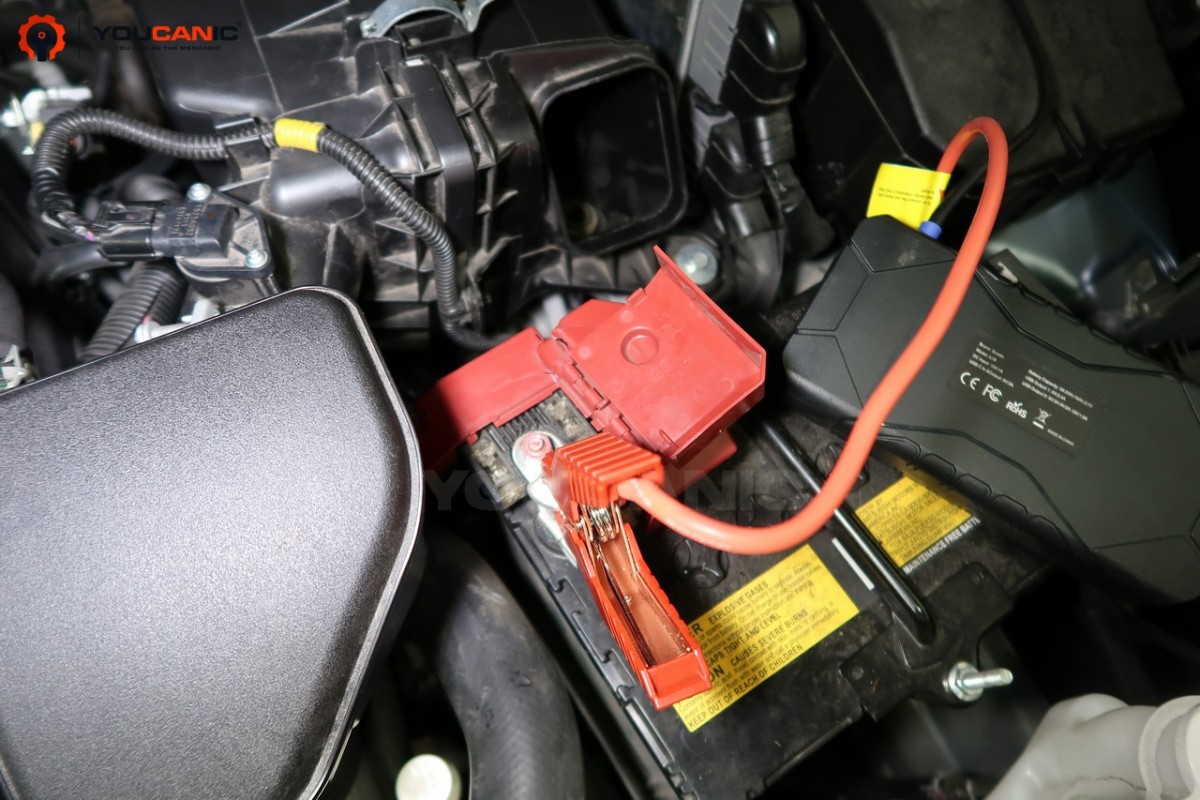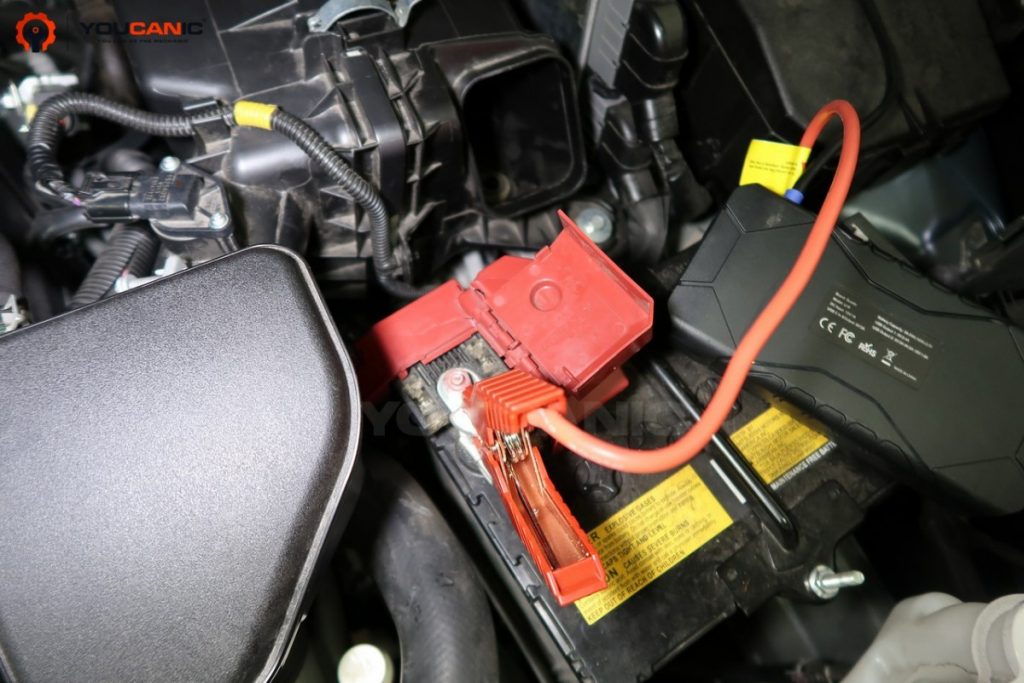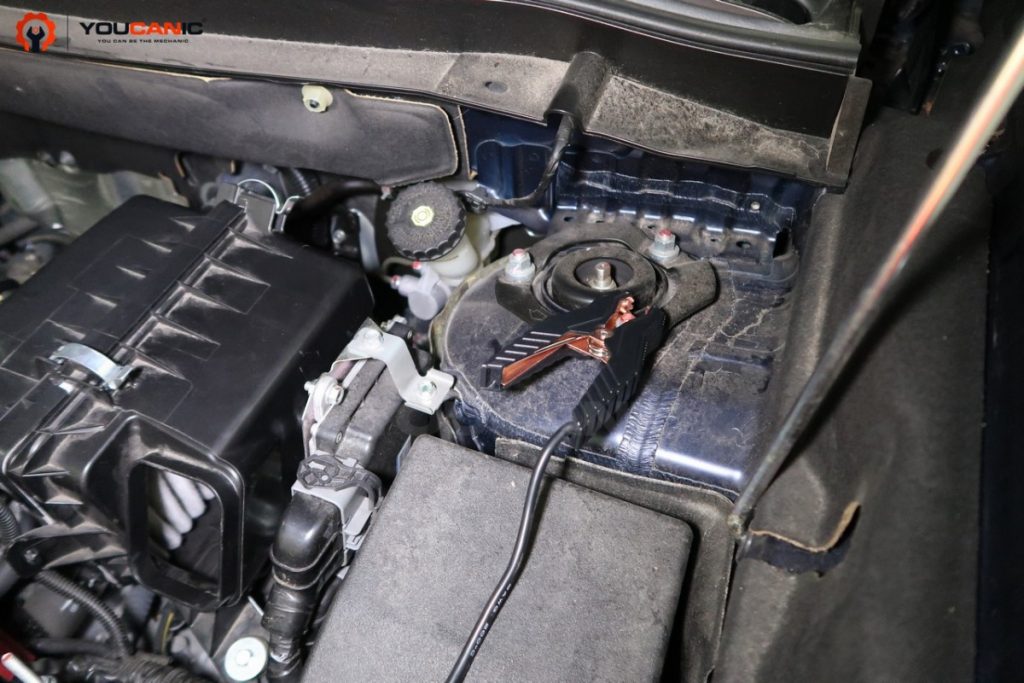
In this guide, we will show you how to jump-start a dead battery on a 2019 Mitsubishi Outlander. The battery in your vehicle could be dead or the voltage discharged for various reasons.
Whatever the cause, it may leave you on the side of the road or stranded in a parking lot. Keeping a jump starter or having jumper cables is essential for any roadside emergencies. In this guide, we will show you how to use them.
What you will need
Jump starter or
Jumper cables
Procedure
1. Begin by seeing if the key fob will unlock the vehicle’s doors.
2. If the doors will not unlock, there is a release on the back of the fob that allows you to pull the metal key out of the fob. Use the key to unlock the doors.
3. Make sure the battery is the problem and not the key fob, try starting the vehicle, see if it turns over at all. If any clicking can be heard or the vehicle’s engine tries to turn over but will not start the battery is likely low.
4. Pop the hood of the vehicle open with the lever under the dash. Raise the hood and place it on its prop.
5. Use the jump starter to try and start the engine. The terminals can be seen and connected to underneath the airbox inlet. This part does not need to be removed.
6. Important safety note: the positive cable is connected first and the negative last.terminal to jump start mitsubishi This will avoid any high voltage shock or sparks. The negative cable can be grounded to the body of the vehicle or connected to the negative battery terminal.
7. If using jumper cables always connect the dead battery first and always be careful not to touch the cable leads together as they will also arc.
8. Always make sure all the leads have a good connection to the terminals as well, give them a wiggle and make sure they are on bare metal.jump start mitsubishi
9. Charge the battery a few minutes before attempting to start. Waiting will allow the electrical circuit of the car, the battery, and the jump starter in parallel to build a current. This will greatly increase the odds of the jump start to work.
10. Attempt to start the car, and once started allow the vehicle to charge with the jump-starter or jumper cables still attached for five to ten minutes. This will allow the battery to build enough charge to stay running. If the vehicle dies or does not start, the battery may be too bad to stay running, or the alternator is bad and draining the battery.
11. In both cases, have the battery and the alternator checked, run a charging system test with a battery and alternator load tester.
12. Once the vehicle is sufficiently running and the battery has enough charge, remove the cables in reverse order. Always remove black, then red (negative, then positive). Get back on the road, to work, or wherever you were headed, you are done!
Your battery may need to be recharged or replaced. Common causes of a discharged or bad battery:
Leaving the lights on draining the battery
A parasitic drain from the vehicles electrical system
A bad alternator/generator
Extreme temperatures
Battery corrosion or loose cables/ terminals
The battery is bad due to age
Vehicle Applications
All Mitsubishi models including Galant, Lancer Evo, Outlander, Eclipse, Mirage, and more. All year models including current-gen: 2012, 2013, 2014, 2015, 2016, 2017, 2018, 2019, 2020, and 2021.
Step 1: Leaving the lights on draining the battery
Step 1: A parasitic drain from the vehicles electrical system
Step 1: A bad alternator/generator
Step 1: Extreme temperatures
Step 1: Battery corrosion or loose cables/ terminals
Step 1: The battery is bad due to age
Vehicle Applications
All Mitsubishi models including Galant, Lancer Evo, Outlander, Eclipse, Mirage, and more. All year models including current-gen: 2012, 2013, 2014, 2015, 2016, 2017, 2018, 2019, 2020, and 2021.

